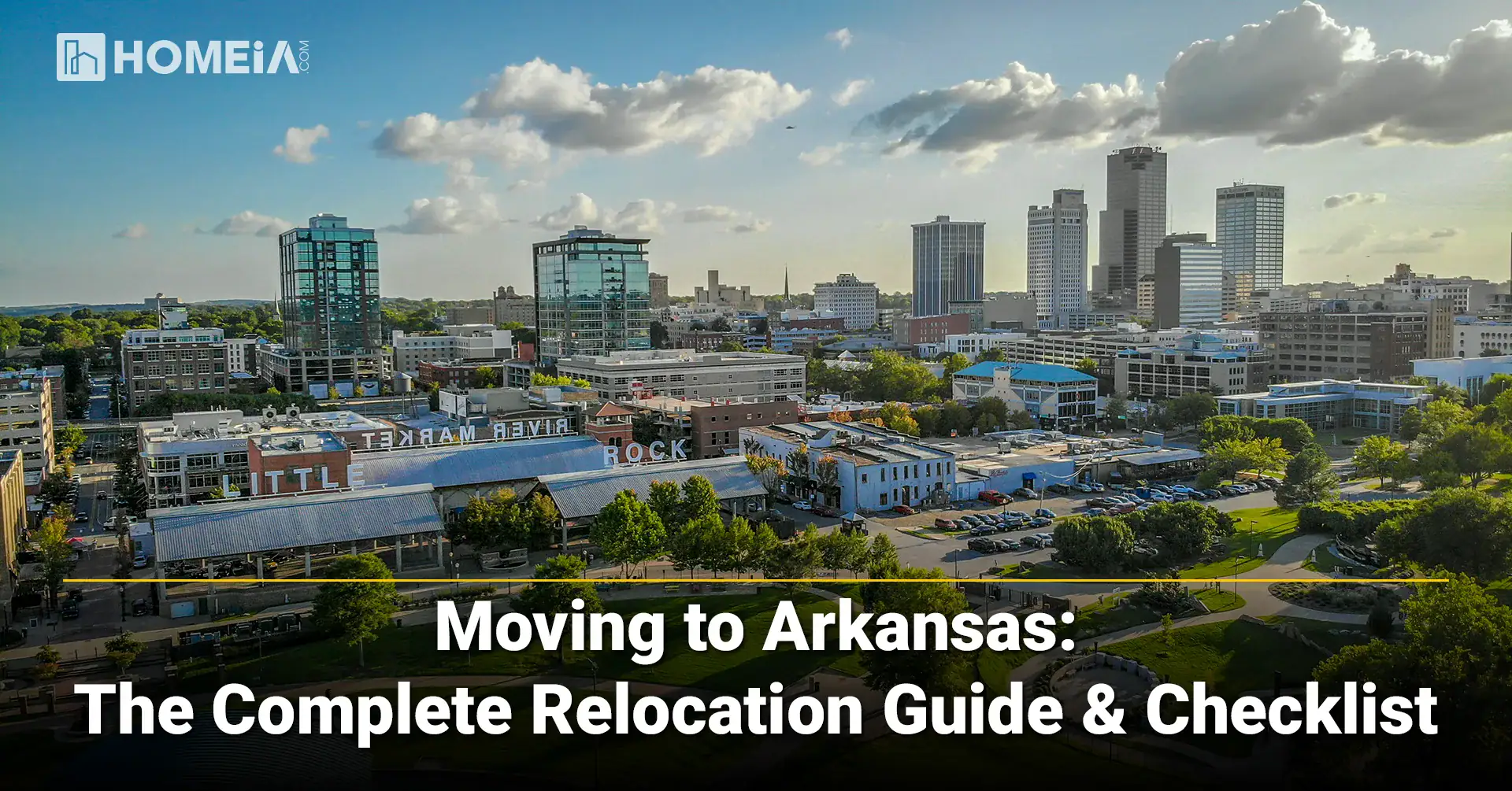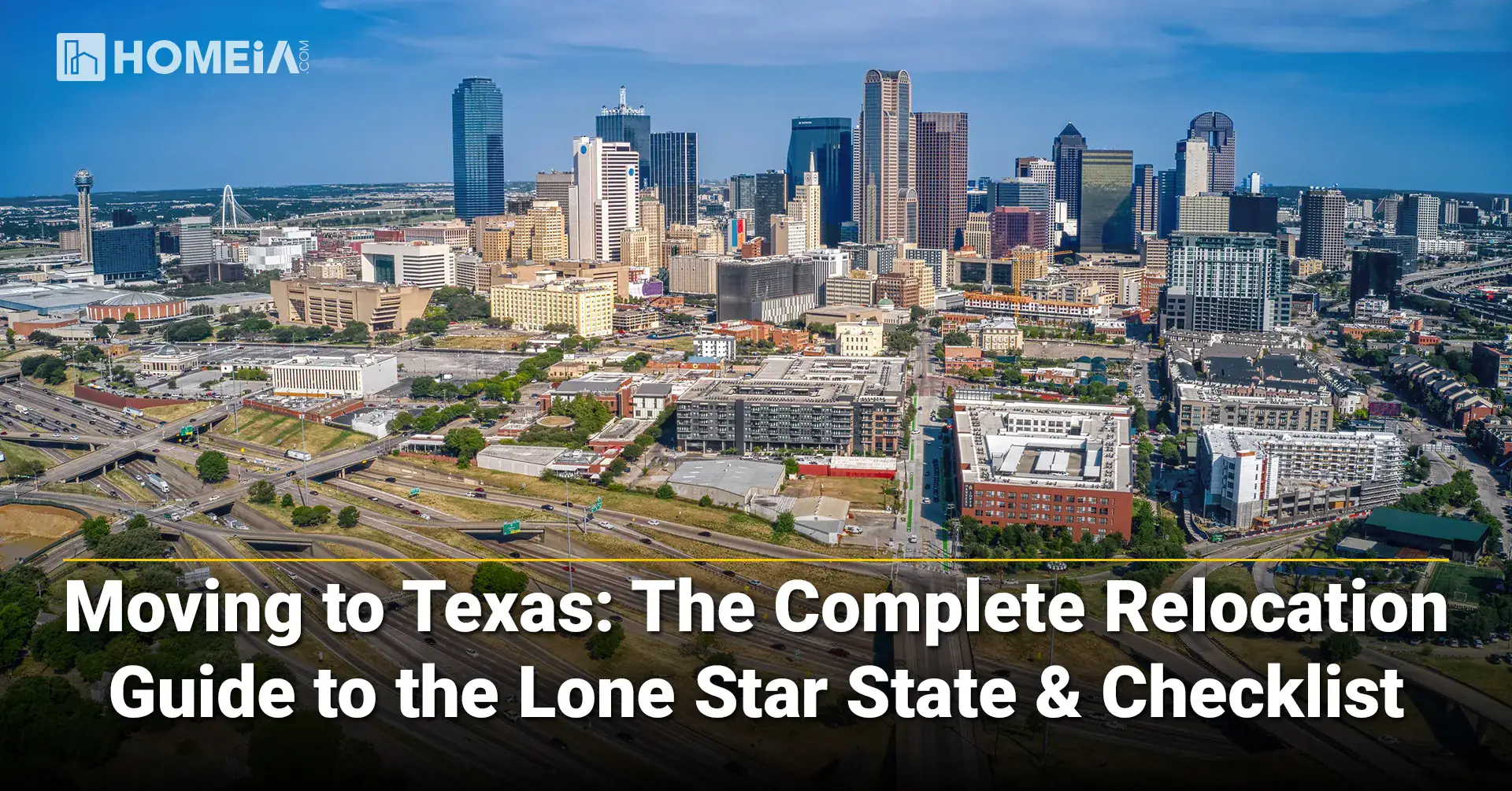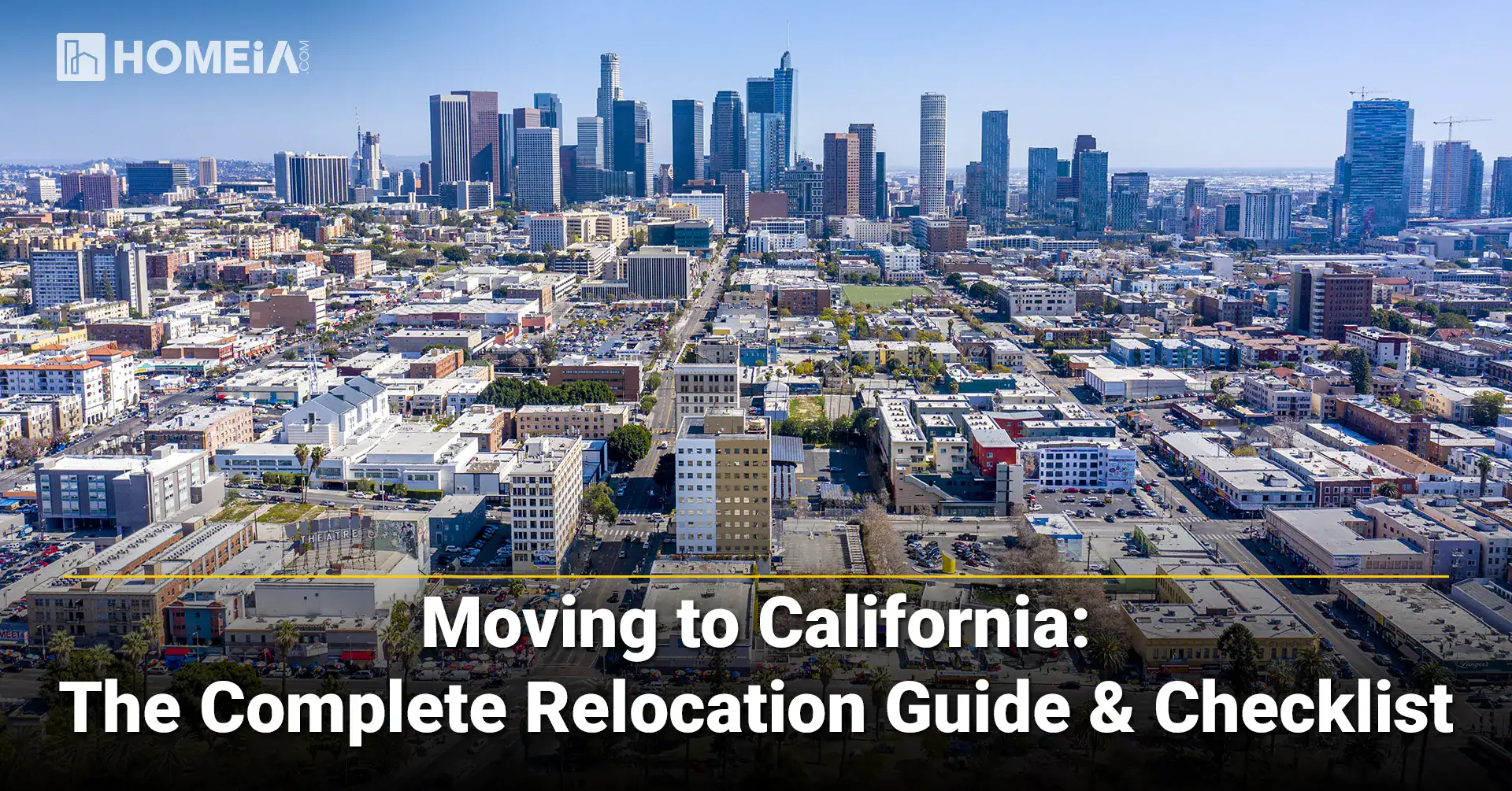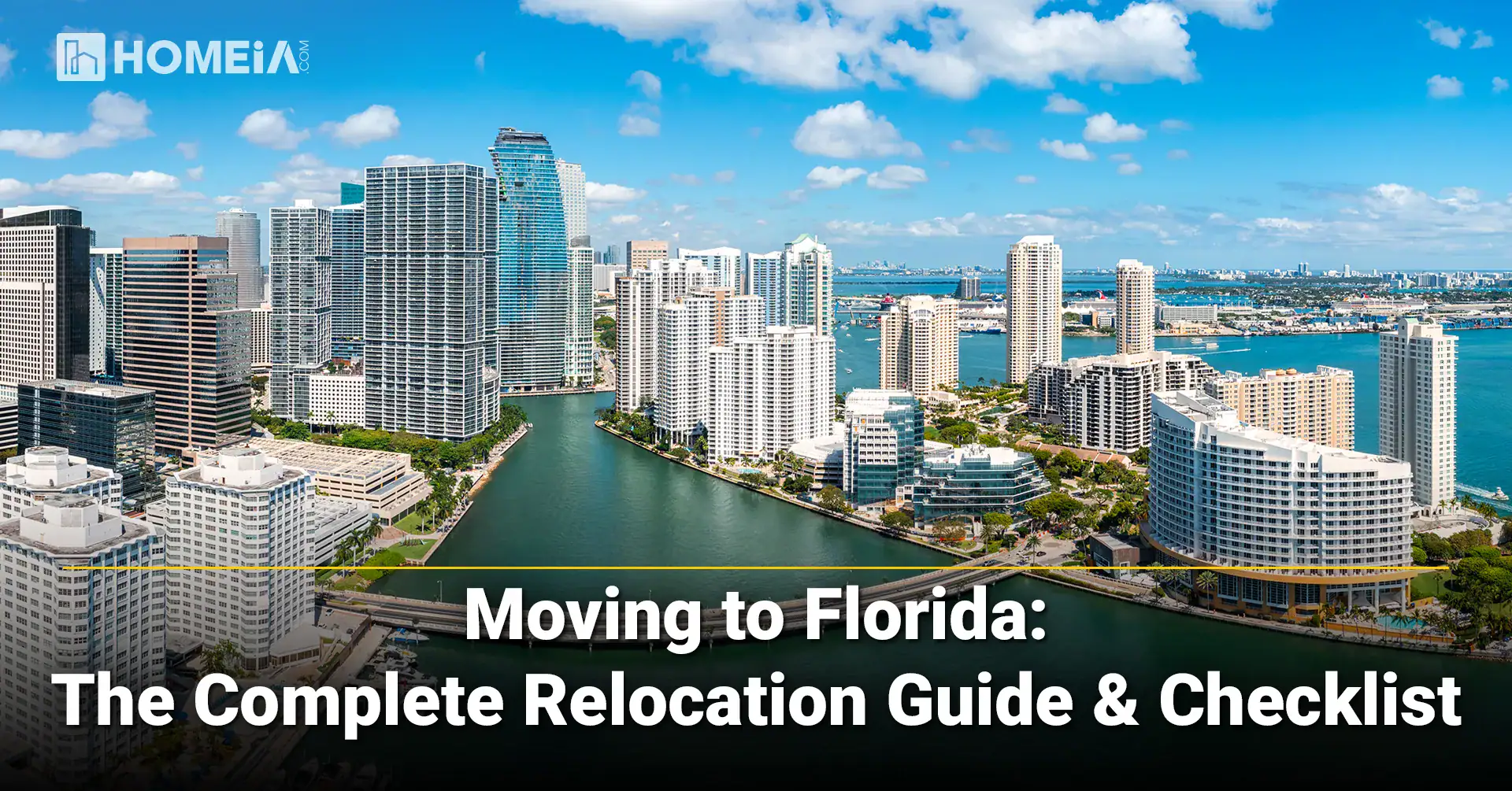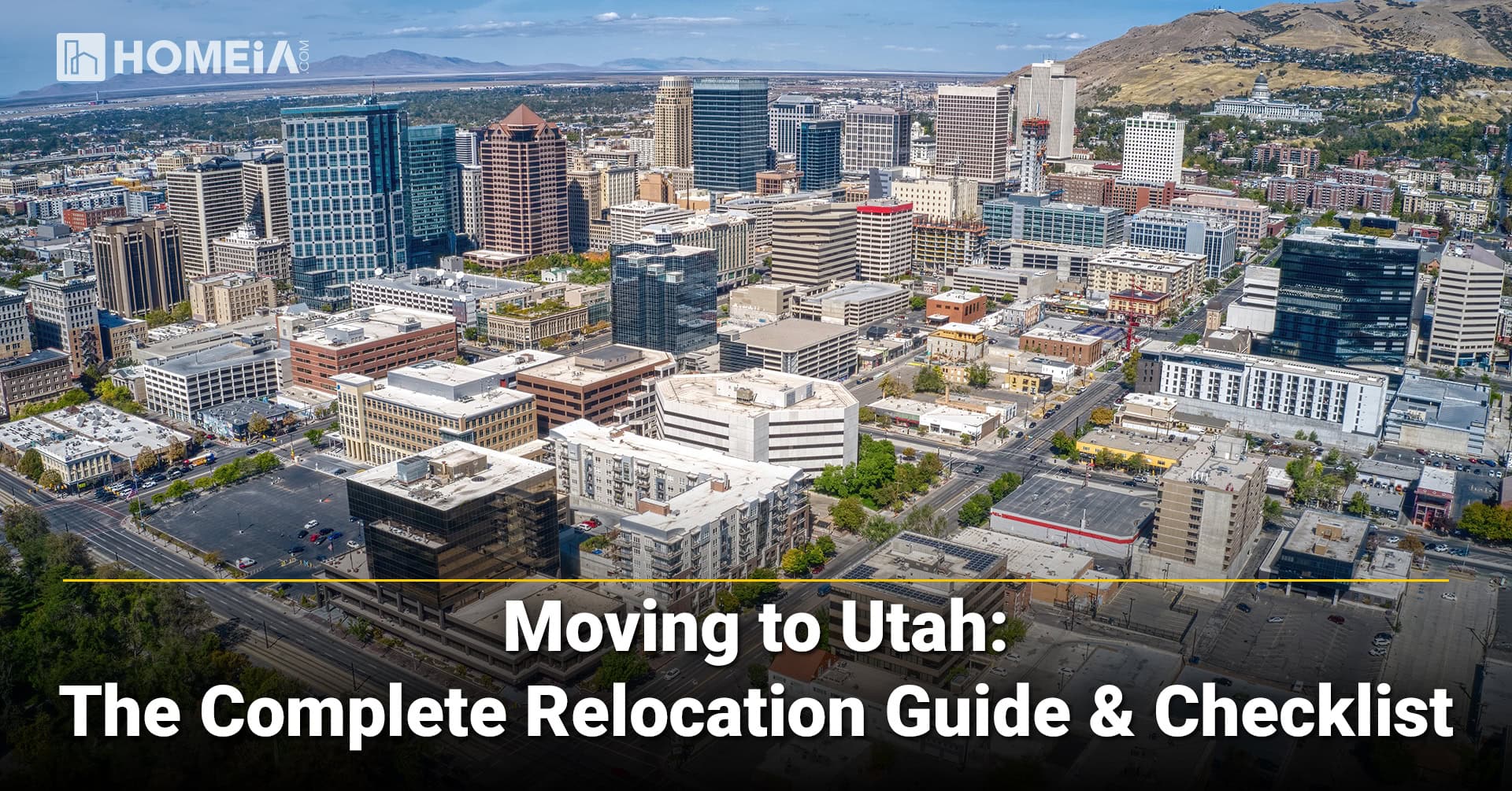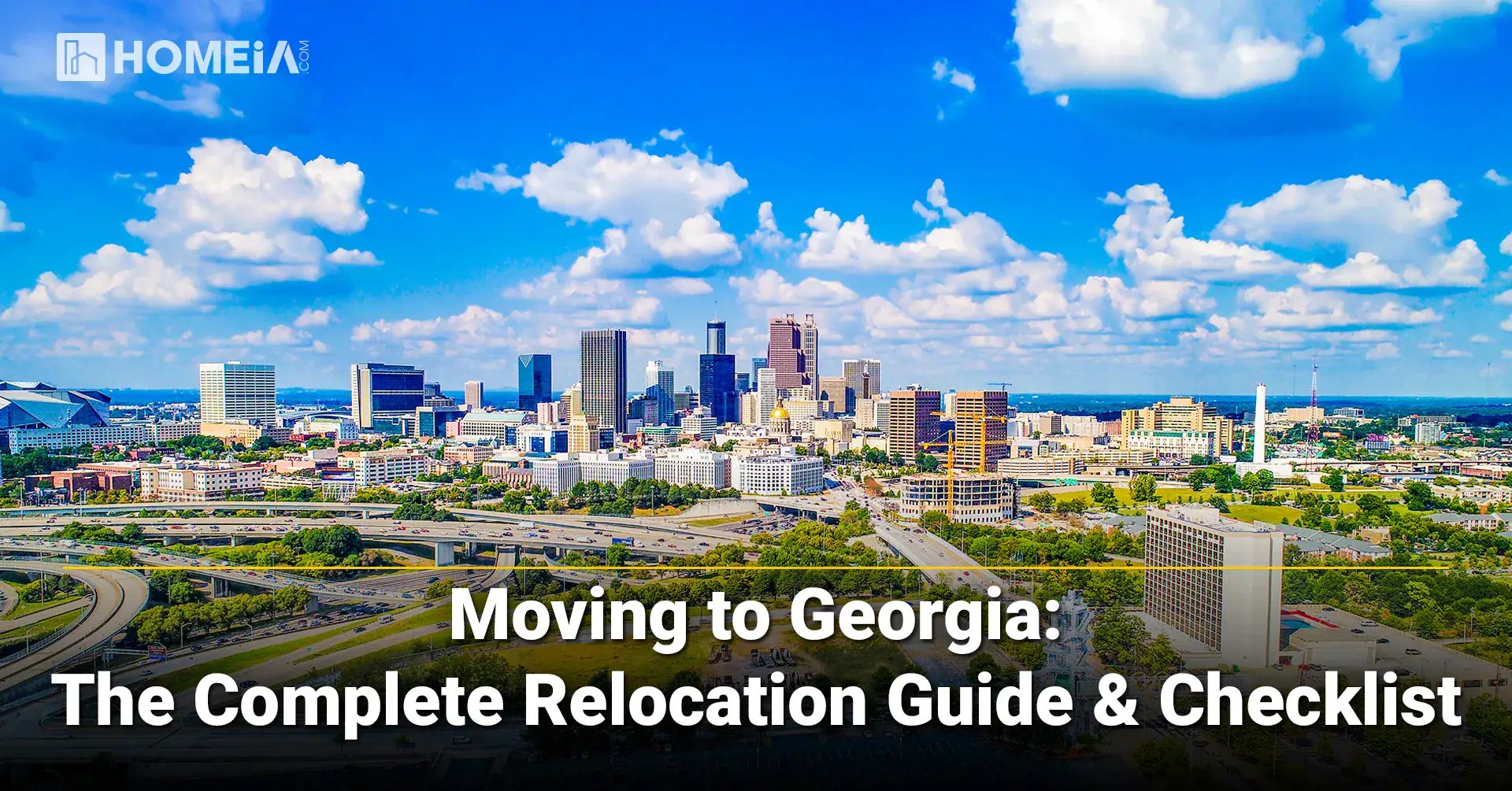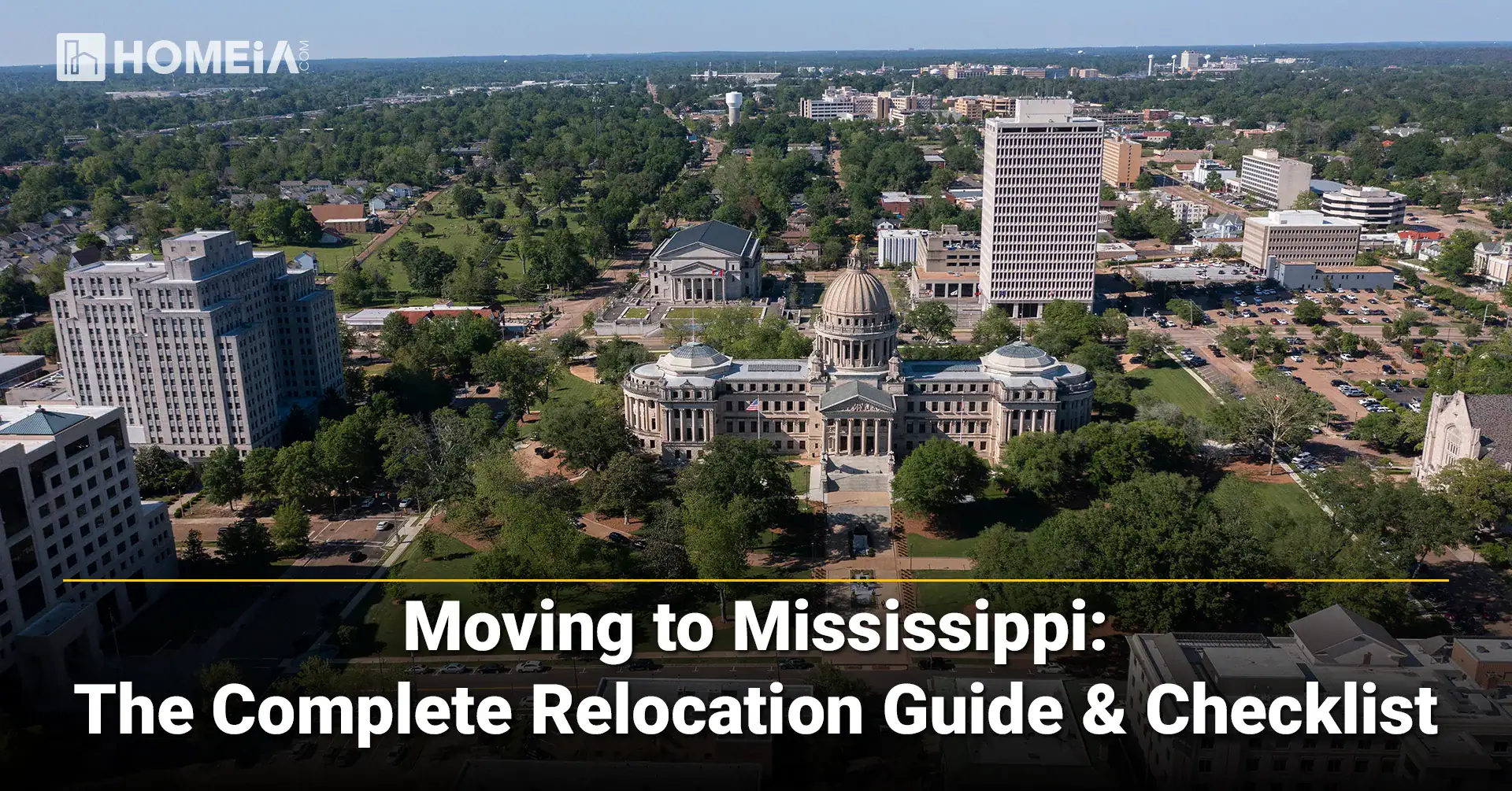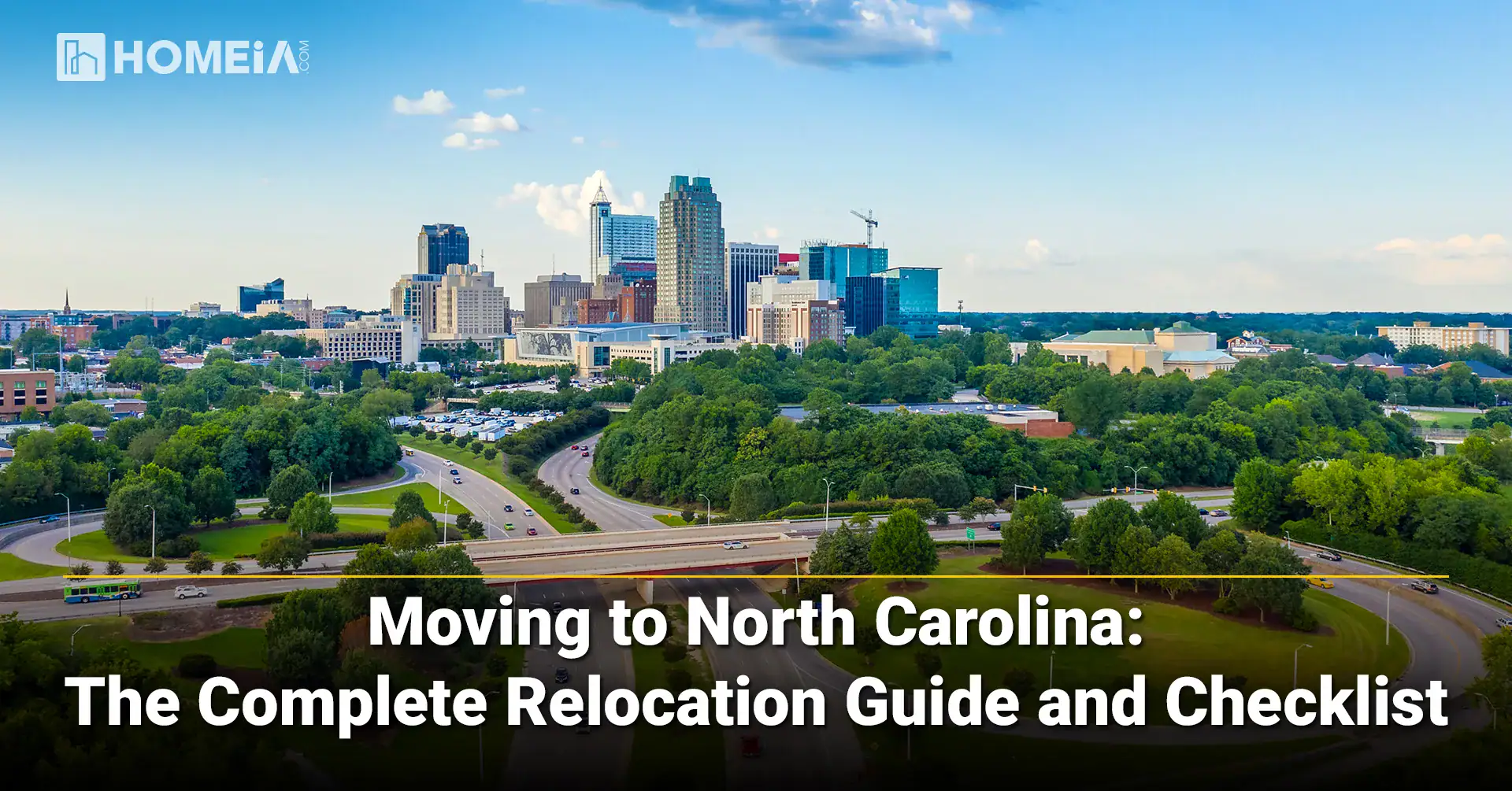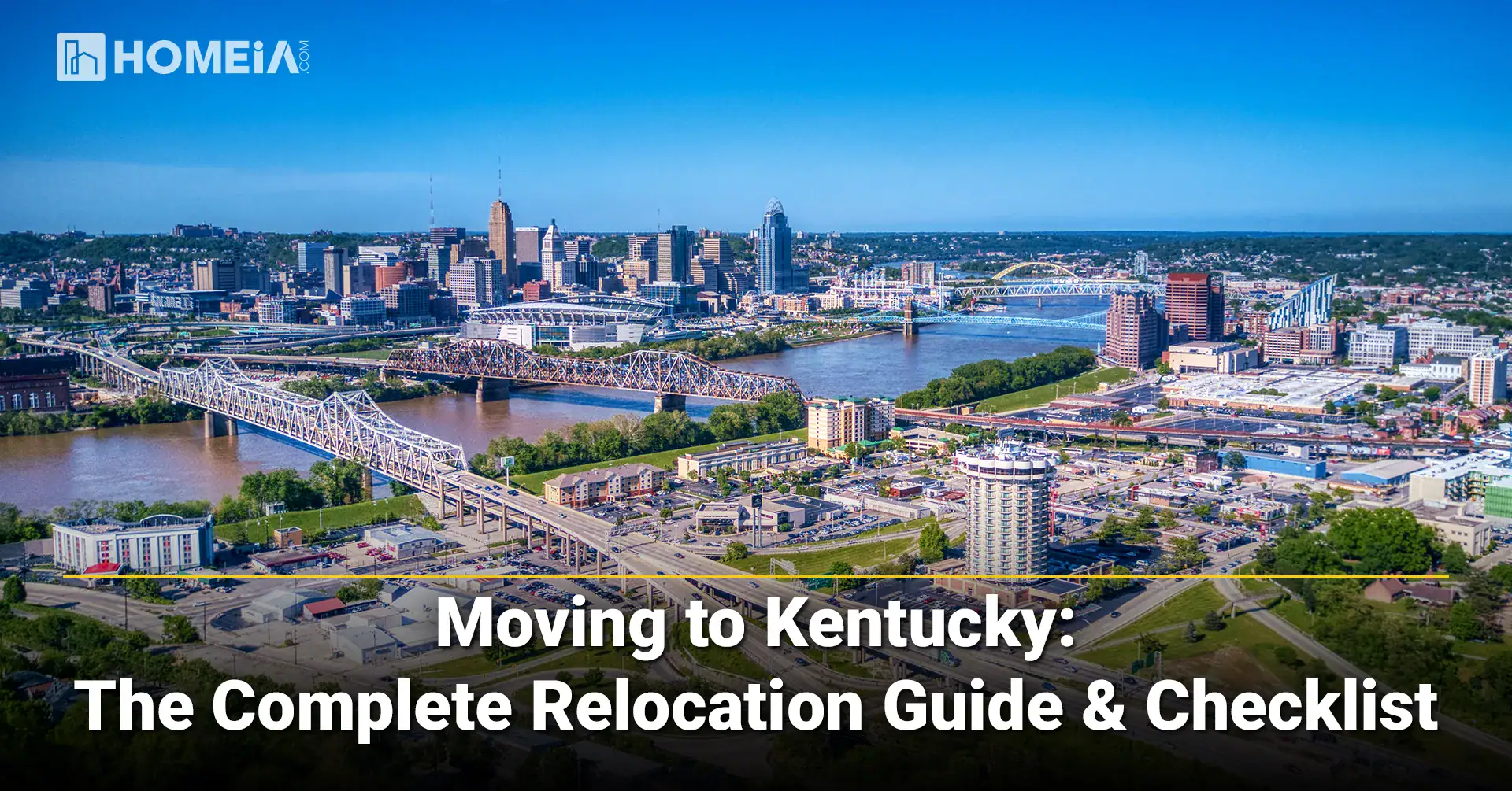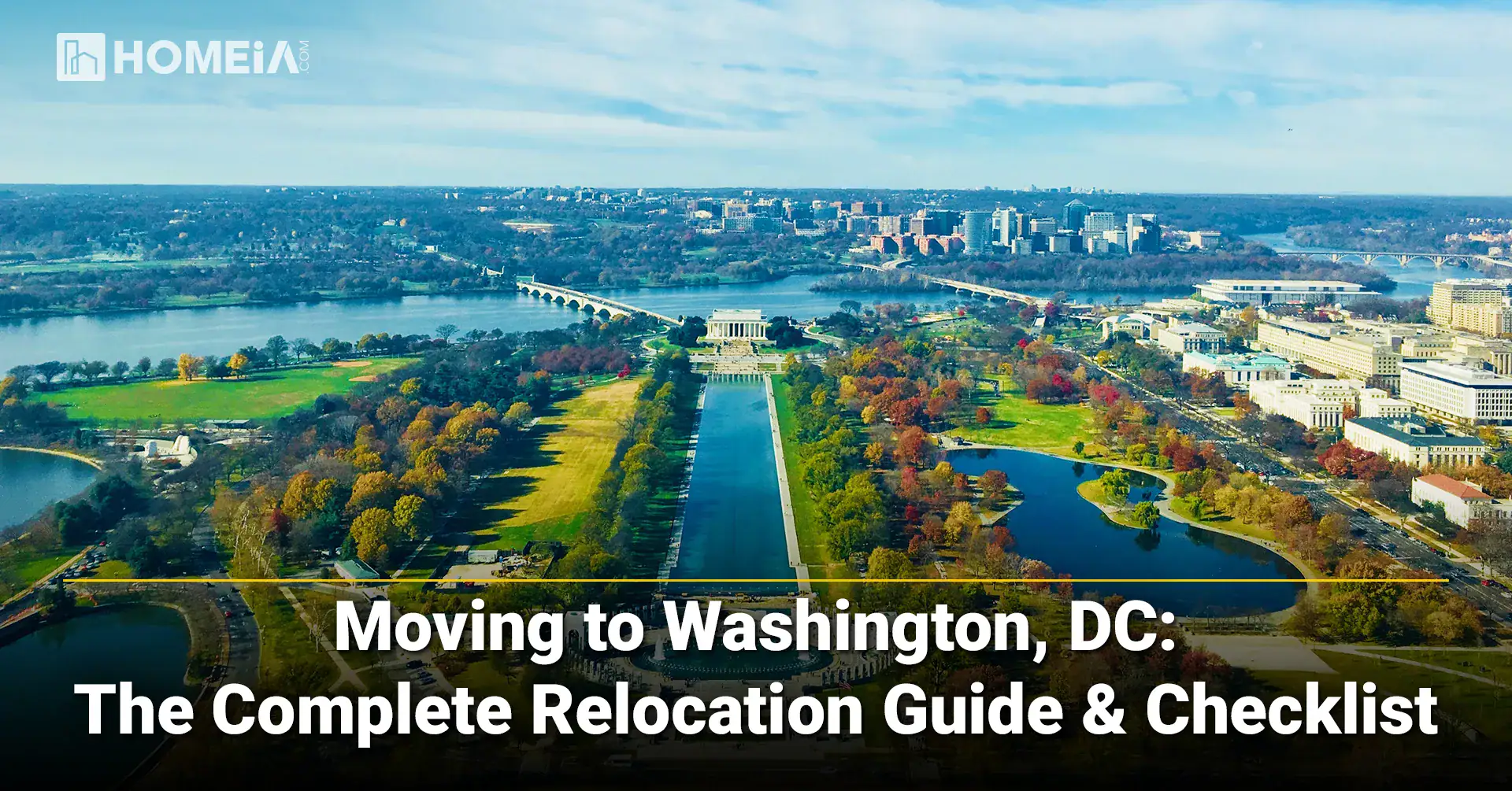Table of Contents:
THE Relocation Checklist
Relocating to a new state requires careful planning and organization. This moving guide outlines the key steps to ensure a smooth transition to your new state, from initial preparations to settling into your new home.
8-12 Weeks Before Moving

- Select a Reputable Moving Company: Obtain quotes from at least three licensed interstate movers with verified USDOT numbers through the Federal Motor Carrier Safety Administration (FMCSA). Schedule services early to secure your preferred date, as peak season (May-September) has limited availability.
- Establish a Comprehensive Moving Budget: Include costs for packing materials, movers (ranging from $2,200 to $8,000 for interstate moves), travel, insurance, temporary lodging, storage, and a 15-20% contingency fund for unexpected expenses.
- Create a Digital Moving Binder and Read up on Best Tips Before Your Move: Set up a cloud-based folder (Google Drive, Dropbox) to organize quotes, contracts, receipts, inventories, and important documents. This page will provide numerous resources to help your move go more smoothly: HOMEiA.com/moving.
- Declutter and Minimize: Sort through personal belongings. Sell, donate, or discard items you no longer need. Reducing shipment weight can save hundreds of dollars on moving costs.
- Research Your New State: Investigate cost of living, tax implications, vehicle inspection requirements, driver’s license waiting periods, and state-specific regulations that may affect your transition.
10 Important Things You Should Prepare for Long-Distance Moving
Moving long distances can be exciting, like an adventure of a lifetime. There is nothing as interesting and energizing as trying out new things and having the opportunity for a fresh start. But let’s be honest: moving is more complex than getting into a car or a bus and leaving for a new place…
6-8 Weeks Before Moving

- Notify Landlords or Realtors: If renting, provide written notice per lease requirements. If selling, begin listing or finalizing property arrangements. Consider timing to avoid double housing costs.
- Acquire Packing Supplies: Purchase or collect free boxes from liquor stores, bookstores, and online marketplaces. Get quality tape, bubble wrap, packing paper, and color-coded labels for room organization.
- Start Packing Non-Essentials: Begin with items that are not in daily use, such as books, seasonal clothing, artwork, and décor. Label boxes with contents and destination room using the room color-coding system.
- Request Medical Records Transfer: Contact all healthcare providers to request the electronic transfer of your records to your new providers. Allow 3-7 business days for electronic transfers or 2-4 weeks for paper records. Obtain 90-day prescription refills if needed.
Important Things to Consider Before Hiring a Moving Company
Whether you’re moving from state to state or just across town, hiring the right moving company will make a world of difference. So, before you hire just anyone, here are a few things that you should definitely consider…
4-6 Weeks Before Moving
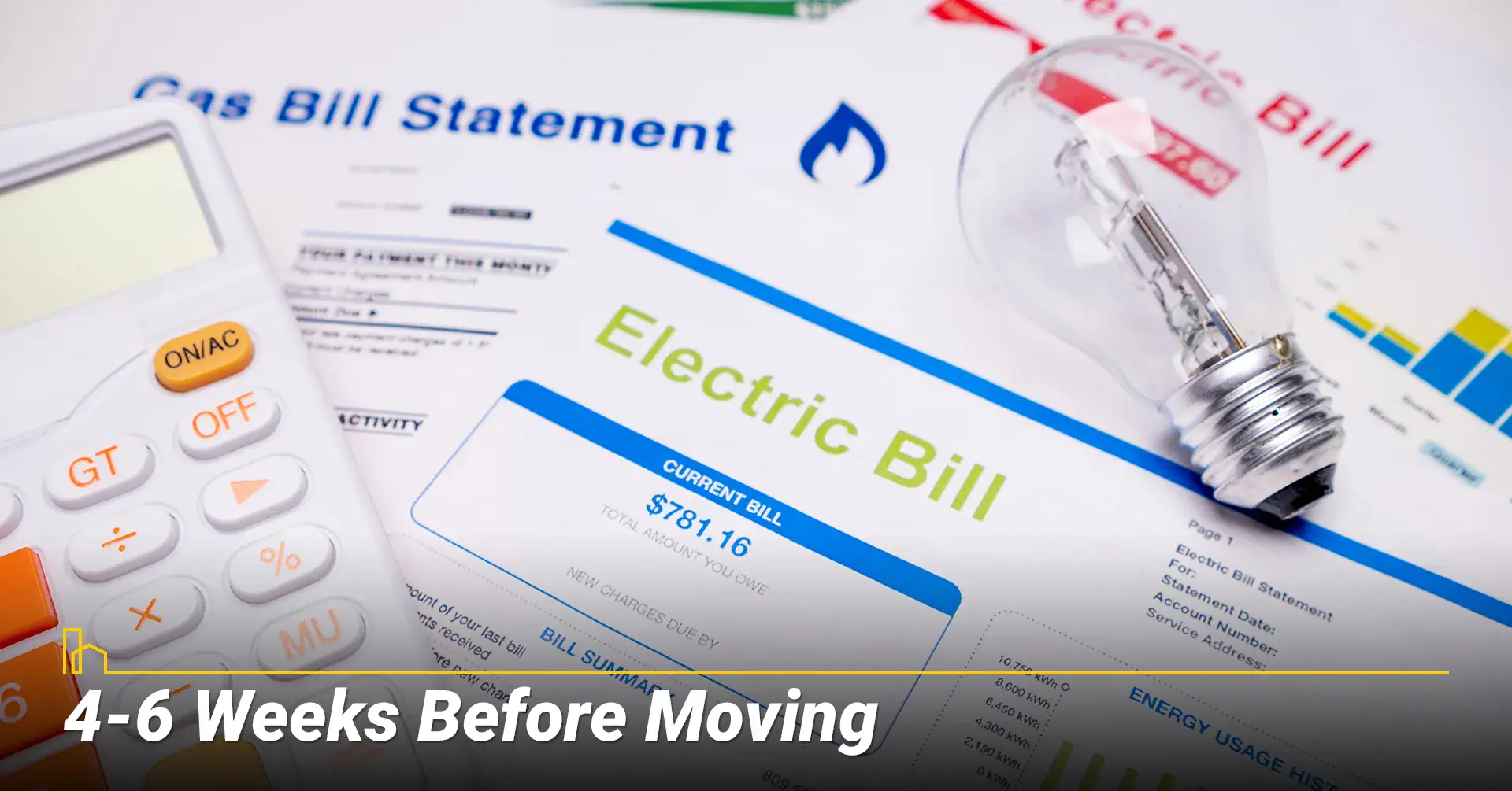
- Schedule Utility Transfers and Setup: Contact your electric, gas, water, internet, cable, and security service providers to arrange termination dates at your current home and activation dates at your new residence. Many providers require two weeks or more notice.
- Submit Change of Address with USPS: File a change of address online or at the post office. Notify banks, insurance providers, credit card companies, subscription services, employers, and the IRS of the address change.
- Research and Contact New Healthcare Providers: Identify and establish relationships with primary care physicians, specialists, dentists, and pediatricians in your new area. Verify insurance network participation and schedule initial appointments.
- Begin School Enrollment Process: If applicable, contact the new school district to begin enrollment. Request transcripts and records from current schools. Research local school ratings and district policies.
15 Things People Usually Forget When Moving
Whether or not you decide to hire a professional moving company, this guide includes everything you need for completing your move. It’s always best to have this list handy so you can check off each task and know that you’re on top of everything…
2-4 Weeks Before Moving

- Finalize Detailed Packing: Label all boxes clearly by room and contents using your color-coding system. Prepare fragile items with proper cushioning. Create a detailed inventory spreadsheet that includes box numbers and their contents.
- Arrange Travel and Vehicle Transportation: Book flights, hotels, or plan driving routes to ensure a seamless travel experience. Schedule vehicle maintenance if you plan to drive long distances. Research auto transport services if you plan to ship vehicles separately.
- Transfer and Organize Prescriptions: Coordinate with the pharmacy to transfer prescriptions to the new location or obtain sufficient supplies for the transition period. Organize a medication travel kit.
- Backup Digital Files and Photos: Create secure backups of important digital files, photos, and documents. Store copies in cloud services and on external drives.
For High-End Relocations, Luxury Moving Companies Deliver
Luxury moving experts offer personalized service and innovative solutions for transporting anything that requires extra care. Here are a few of the features a high-end moving company may be able to offer…
1-2 Weeks Before Moving
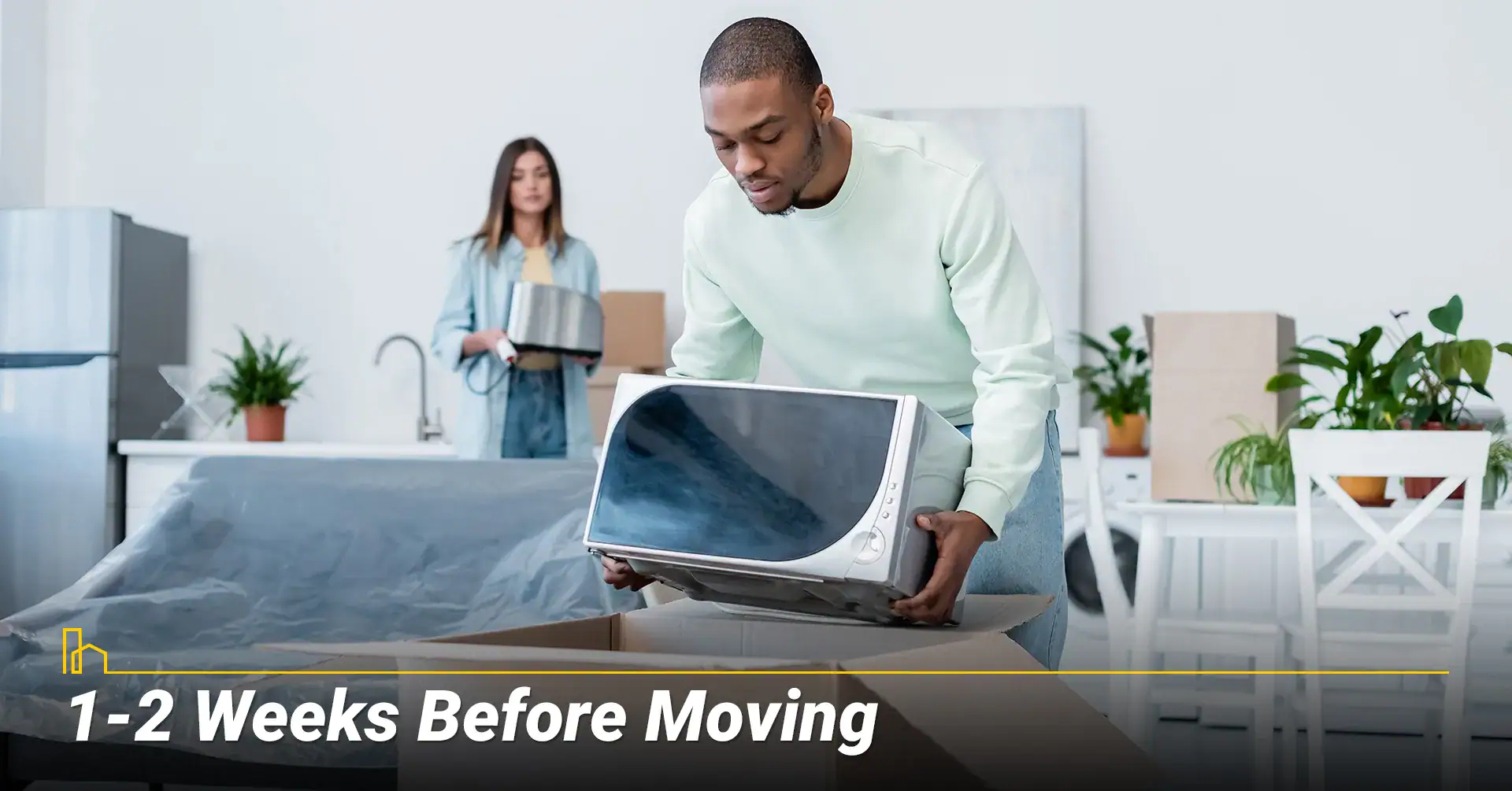
- Confirm All Moving Details: Reconfirm logistics with your moving company, including exact date, time, any special instructions, and their contact information. Verify insurance coverage details.
- Pack an Extended First-Night Essentials Kit: Include toiletries, medications, 3-5 days of clothing, bedding, phone chargers, basic tools, cleaning supplies, snacks, and essential kitchen items for immediate needs.
- Prepare Appliances and Large Items: Clean and defrost appliances 24 hours before moving. Disassemble large furniture and keep hardware in labeled bags. Take photos for insurance and reassembly reference.
- Notify Personal and Professional Contacts: Share your new address with family, friends, professional contacts, and any service providers. Update your address on professional networking sites.
15 Essential Steps for Moving to a New City
If you’re moving to a new city, though, the process is even more complicated. Without the ability to make a quick trip here and there, you’ll need a detailed plan to keep everything running smoothly. This guide to relocation will help you make a plan and check all the boxes so your move will be as painless as possible...Moving Day

- Supervise and Document the Move: Be present to oversee the packing and loading process. Take photos of valuable items before packing. Keep inventory lists and important documents with you, not in the moving truck.
- Conduct a Thorough Final Walkthrough: Inspect all rooms, closets, storage spaces, garage, and outdoor areas before leaving. Check that utilities are turned off and security systems are properly set.
- Leave Helpful Information for New Occupants: Provide relevant property instructions, utility contact information, local service recommendations, and any access codes or special instructions.
30 Best Packing Tips for Moving to a New City
How do you get everything safely from Point A to Point B on a tight schedule? With a lot of planning. Here are our best tips to make the process of moving to a new city as smooth as possible…
After the Move

- Unpack Strategically: Prioritize essential rooms: starting with bathrooms, then bedrooms, and finally the kitchen. Set up utilities and internet immediately. Unpack room by room using your inventory system.
- Update Legal Documents and Registrations: Apply for a new state driver’s license within 30 days (requirements vary by state), update vehicle registration, register to vote, and update insurance policies with the new address.
- Establish Your New Community Presence: Explore local services, parks, restaurants, and civic amenities to get a sense of the area. Register children for activities, find new healthcare providers if needed, and establish your new routine.
- Follow Up on Record Transfers: Confirm that medical records, school transcripts, and other important documents have been successfully transferred to the new providers.
For additional guidance or resources related to moving to your new state, contact the Public Utility Commission of that state, visit the official state websites, or consult professional relocation services for complex moves.
=> Get the Relocation Guide & Checklist PDF — prepared for both Desktop and Mobile devices.
10 Budget-Friendly Ways to Move Across the U.S.
In this article, you’ll learn how to save money in small and meaningful ways when moving across the USA. From the planning to the packing stage, these are some creative hacks to cut down your moving costs…
Frequently Asked Questions about Relocation
1. What specific factors beyond price should I consider when comparing moving company estimates?
Focus on the estimated type as those non-binding can increase by 110% at delivery. Watch for hidden fees like stair carry, elevator, long-carry, and shuttle charges. Compare insurance options (basic vs. full value protection) and verify FMCSA licensing. Request in-person or video estimates over instant online quotes for accuracy.
2. How can I bridge the gap when my move-out and move-in dates don’t align?
Use portable storage containers (PODS, UNITS, Zippy Shell) to pack once and store at secure facilities. Many offer climate-controlled, ground-level access and month-to-month storage without long-term lease commitments. Storage-in-transit options from moving companies eliminate double handling.
3. What digital tools can streamline my moving process beyond basic checklists?
Use inventory apps like Sortly, Everspruce, or ToteScan. They generate QR codes for boxes where you can scan to instantly see contents without opening. Link QR codes to Google Sheets for real-time updates. Use Monday.com or Asana for milestone tracking, and TaskRabbit for local labor needs.
4. What should I know about moving pets across state lines?
Research destination state requirements—some have stricter vaccination or quarantine rules. Update pet microchip info and check if your employer’s relocation package includes pet transportation reimbursement (up to $1,000 with some companies). Review airline pet policies for air travel to ensure post-pandemic updates are followed.
5. What relocation benefits should I negotiate beyond basic moving expenses?
With average costs ranging from $33,532 (renters) to $85,466 (homeowners), negotiate house-hunting trips, spousal job assistance, 30-90 day temporary housing, lease termination coverage, and home sale assistance. Request tax mark-ups as relocation benefits are taxable income until 2025.
6. How do state tax implications affect relocations?
Moving expenses aren’t federally deductible after 2025 (except active military), but some states allow deductions for 50+ mile moves. Research your new state’s income, retirement, and property tax structures. Some states have agreements preventing double taxation for cross-border workers.
Moving Container Value Guide: PODS, U-Pack and PACK-RAT
This comprehensive comparison of the three industry leaders—PODS, U-Pack, and 1-800-PACK-RAT — examines which company might best suit your specific moving and storage needs. We’ve analyzed pricing, container quality, availability, storage options, and customer experiences to help you make an informed decision…
7. How can I maintain healthcare continuity during a cross-state move?
Use telehealth to stay up-to-date during provider gaps and join national pharmacy chains (CVS, Walgreens, Walmart) for easier prescription transfers. Verify insurance network coverage in your new state and request electronic record transfers 3-7 days in advance. Consider COBRA if changing employers.
8. How should I handle membership and subscription transfers?
Contact gyms 30-60 days in advance—many have specific out-of-state requirements. Some subscriptions update automatically with USPS changes, but others may require action on your end. Update streaming service locations for regional content access. Document all cancellation confirmations to keep on-file.
9. What helps children adjust to long-distance moves?
Create a “moving adventure book” with photos of your new area and involve kids in age-appropriate planning. Maintain consistent routines, arrange virtual school tours, and research relevant indoor, outdoor, and seasonal activity options. Many communities have newcomer programs for families which are perfect for making friends quickly.
10. How can I evaluate neighborhoods using modern tools?
Use Nextdoor, Reddit, and Facebook groups for local discussions. Google Maps helps provide a real-time commute analysis during work hours while visiting during different times helps understand how traffic and parking make it easier to adjust your morning routine accordingly. Check Walk Score for walkability, research planned developments, and consider environmental factors like flood zones and air quality.
Local Editor(s)
Moving to Illinois: The Complete Relocation Guide & Checklist
Moving to a new state can be both exciting and overwhelming, and Illinois offers a unique mix of big-city energy and small-town comfort that makes it an appealing destination for…
Moving to Connecticut: The Complete Relocation Guide & Checklist
Bordered by New York, Massachusetts, and Rhode Island, and home to a stunning coastline along Long Island Sound, Connecticut offers a lifestyle defined by New England charm, historical significance, and…
Moving to Nevada: The Complete Relocation Guide & Checklist
Bordered by California, Oregon, Idaho, Utah, and Arizona, Nevada offers a lifestyle defined by entertainment, natural wonders, and business-friendly policies. About 3.2 million residents call The Silver State home, drawn…
Moving to Louisiana: The Complete Relocation Guide & Checklist
Bordered by Texas, Arkansas, and Mississippi, and home to vibrant cultural traditions, Louisiana offers a lifestyle defined by rich heritage, culinary excellence, and profound natural beauty. More than 4.5 million…
Moving to New Mexico: The Complete Relocation Guide & Checklist
Bordered by Texas, Arizona, and Mexico, and home to breathtaking landscapes, New Mexico offers a lifestyle defined by rich cultural heritage, artistic expression, and profound natural beauty. Over 2 million…
Moving to Alaska: The Complete Relocation Guide & Checklist.
Bordered by Canada and surrounded by the Pacific and Arctic Oceans, Alaska offers a lifestyle defined by breathtaking wilderness, rugged independence, and profound natural beauty. Almost 750,000 residents call The…
Moving to Arkansas: THE Complete Relocation Guide & Checklist
Arkansas offers a compelling blend of natural beauty, deeply rooted community spirit, and exceptional affordability. Whether you're drawn by career opportunities, renowned universities, or affordable living with access to diverse…
Moving to Texas: THE Complete Relocation Guide to the Lone Star State and Checklist
Thinking about relocating to Texas? You're joining over 500,000 people who move to the Lone Star State each year, making Texas the #1 destination for interstate migration and out-of-state moves.…
Moving to Georgia: THE Complete Relocation Guide and Checklist
Thinking about making the move to Georgia? The Peach State is a great selection. The people are friendly, the sweet tea is cold, and the living is good. As a life-long Georgia resident I can tell you, this state has…
Moving to Pennsylvania: THE Complete Relocation Guide & Checklist
There's no place quite like Pennsylvania. With its rich history, diverse landscapes, thriving economy, and proximity to the ocean, the Keystone State is one I'm proud to call home—and I hope you will, too! Whether you're drawn by career opportunities,…
The Pros and Cons of Living in Massachusetts
Moving to a new part of the US requires careful consideration of both the state itself and the specific community you'll join. If Massachusetts is your next destination, you'll find a state rich in history, culture, and natural beauty, but…
The Pros and Cons of Living in Oregon
Relocating to a new state requires careful consideration of both the state as a whole, as well as the specific community you'll join. Oregon offers stunning natural beauty, vibrant cities, and a progressive culture with options for all ages, budgets,…
The Pros and Cons of Living in Wisconsin
Relocating to a new state requires careful consideration of both the state as a whole and the particular community you choose to reside in. With its diverse landscapes, vibrant cities, and friendly communities, Wisconsin offers solid options for everyone. Whether…














